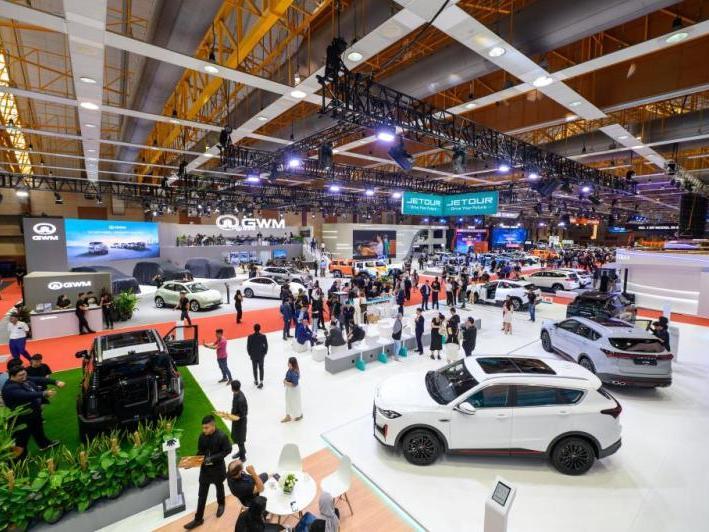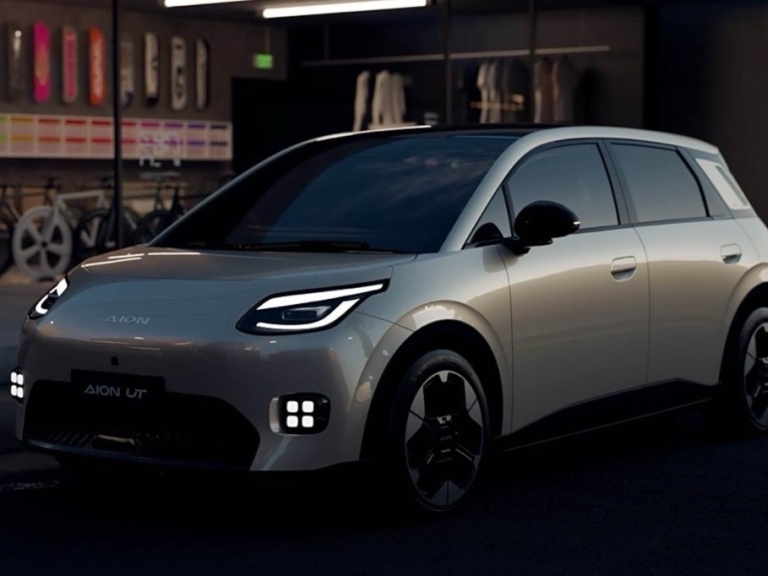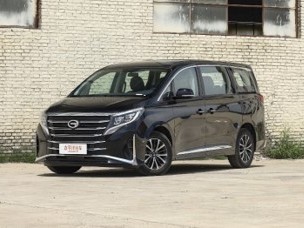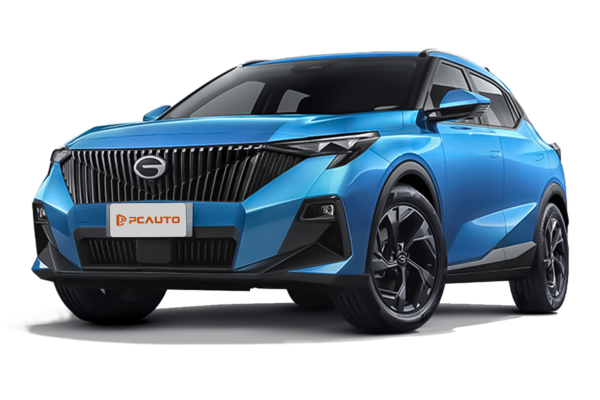Q
What is the engine displacement of GAC GS3?
The GAC GS3 is equipped with a 1,497 mL (commonly referred to as 1.5L) turbocharged inline 4-cylinder engine, delivering a maximum output of 177 PS and 130 kW at 5,500 rpm, with peak torque of 270 N·m at 4,500 rpm. This engine configuration provides robust power to meet various driving demands, from daily commutes to highway driving.
The turbocharged engine not only improves power output but also performs well in fuel efficiency. Paired with a 7-speed DCT transmission, the powertrain ensures more direct power delivery and quicker gear shifts, significantly improving driving smoothness and handling responsiveness for an overall excellent driving experience.
Special Disclaimer: This content is published by users and does not represent the views or position of PCauto.
Related Q&A
Q
What's the length of GAC GS3?
The lengths of different versions of the GAC GS3 is different. The length of the 2021 model is 4358 mm, while the lengths of the Standard and Exclusive versions of the 2024 model are both 4410 mm, and the length of the Premium R version is 4446 mm. The length of a car is an important dimensional parameter that affects the interior space layout and external handling flexibility. A longer body usually provides more spacious rear seats and trunk space. For example, the increased length of the 2024 model may show more abundant rear legroom and greater trunk capacity. However, in confined spaces such as alleys or compact parking spots, a longer body tends to be less maneuverable, potentially increasing parking difficulty.
Q
What is the fuel efficiency of GAC GS3?
The official comprehensive fuel consumption of different models of GAC GS3 varies. For example, the official comprehensive fuel consumption of all models in the 2024 GAC GS3 EMZOOM series (including Standard, Exclusive, and Premium R) is 5.9 L/100 km, while the official comprehensive fuel consumption of the 2021 GAC GS3 Standard and Premium is 6.9 L/100 km. However, the actual fuel efficiency is affected by various factors. In terms of driving habits, rapid acceleration, sudden braking, and prolonged idling will increase fuel consumption, while smooth driving helps improve fuel efficiency. Regarding road conditions, frequent starting and stopping on congested roads and driving at excessively high speeds on highways will both increase fuel consumption. Overloading the vehicle, such as keeping the trunk fully loaded for extended periods, will also lead to increased fuel consumption.
Q
What's the fuel consumption per liter of the GAC GS3?
The official comprehensive fuel consumption of different model versions of the GAC GS3 is different. For example, the official comprehensive fuel consumption of the 2024 model is 5.9L per 100 km. Calculated based on this data, each liter of fuel can approximately run 16.95 kilometers. The official comprehensive fuel consumption of the 2021 model is 6.9L per 100 km, meaning that each liter of fuel can run approximately 14.49 kilometers. However, it should be noted that these are only official data, and the actual mileage will vary due to factors such as driving habits, road conditions, and vehicle load. For instance, rapid acceleration, sudden braking, long periods of idling, and frequent traffic jams will increase fuel consumption and reduce the driving mileage per liter of fuel. On the other hand, smooth driving, reasonable use of air conditioning, and regular vehicle maintenance can help improve fuel efficiency and increase the driving distance per liter of fuel.
Q
What is the safety rating of the GAC GS3?
The GAC GS3 has received the highest five-star safety rating from the ASEAN New Car Assessment Program (ASEAN NCAP). It excels in safety configurations, with the number of airbags varying across different versions. Some models are equipped with up to 7 airbags, including those for the driver's seat, front passenger seat, front side airbags, and front head airbags (curtains), providing comprehensive protection for occupants. Additionally, the vehicle is equipped with a series of active and passive safety systems such as ABS anti-lock braking, electronic stability control, lane departure warning, autonomous emergency braking, and forward collision warning. The body rigidity has also been enhanced through the use of GAC 2.0 high-strength steel, accounting for 36% of the total structure. Furthermore, it incorporates the Bosch ESP 9.3 electronic stability program to maintain directional stability during tire grip variations and enhance driving safety.
Q
Does the GAC GS3 support Android Auto?
The currently provided information of the GAC GS3 model does not mention whether it supports Android Auto. Generally, to check if a vehicle supports this function, you can refer to the vehicle's multimedia system manual or consult a GAC authorized dealer. Android Auto allows users to project apps from their mobile phones onto the vehicle's screen, providing convenient operations such as navigation and music playback. If the GAC GS3 supports Android Auto, the convenience and safety of using phone functions while driving will be greatly enhanced. However, if it doesn't support this function, basic audio transmission and other functions can still be achieved via Bluetooth connection to meet some in-car entertainment needs, or similar function of phone connectivity may be used for similar purposes.
Q
What is the fuel consumption of GAC GS3?
The fuel consumption of different models of GAC GS3 varies. The official combined fuel consumption of GAC GS3 is 5.9L/100km. However, the actual fuel consumption is usually affected by various factors, such as driving habits, road conditions, vehicle load, and environmental conditions. To reduce the vehicle's fuel consumption, you can develop good driving habits in daily driving, such as smooth acceleration and deceleration, rational use of air conditioning, and regular vehicle maintenance to ensure optimal performance.
Q
What's the size of the tank of the GS3?
The fuel tank capacities of different versions of the GS3 vary. The 2021 model has a 50-liter fuel tank, while the 2024 model has a 47-liter one. The fuel tank capacity directly affects the vehicle's driving range. A larger tank reduces refueling frequency and enhances travel convenience. It's important to note that the manufacturer-specified tank capacity refers to the volume from the bottom of the tank to the safe fill level. There is additional space between the safe fill level and the tank opening, designed to accommodate fuel expansion when temperatures rise, preventing overflow. Therefore, during actual refueling, the amount of fuel that can be added up to the tank opening may exceed the officially rated capacity.
Q
What type of transmission is the GAC GS3 equipped with?
Different models of GAC GS3 are equipped with different types of transmissions. The 2021 GAC GS3 Standard and Premium versions are equipped with AT (Automatic Transmission) transmissions. The 2024 GAC GS3 EMZOOM Standard, Exclusive, and Premium R versions are all equipped with DCT (Dual-Clutch Transmission) transmissions with 7 gears. AT transmissions offer mature and stable technology, delivering a comfortable driving experience. DCT transmissions provide faster shifting, higher transmission efficiency, and more direct power output, enhancing driving pleasure and improving fuel economy. Different transmission types can meet diverse consumer needs.
Q
What's the fuel consumption per 100 km of the GAC GS3?
The official combined fuel consumption of different model versions of GAC GS3 varies. The official combined fuel consumption of the 2024 model is 5.9L per 100km, while that of the 2021 model is 6.9L per 100km. The actual fuel consumption per 100km of the vehicle is affected by various factors, such as driving habits, road conditions, vehicle load, and usage of the air conditioner. Situations such as rapid acceleration, sudden braking, prolonged idling, and high-speed driving usually increase fuel consumption, whereas good driving habits like smooth driving, proper gear shifting, and maintaining an appropriate speed help reduce it. Actual fuel consumption usually fluctuates around the official data and may be higher or lower than the stated value. Car owners can optimize their driving habits in daily use to achieve better fuel efficiency.
Q
How much horsepower does GAC GA3 deliver?
The horsepower of different versions of the GAC GA3 models varies. For example, the 1.6L DCVVT engine equipped in some models delivers a maximum power output of 122 hp (90 kW) at 6,300 rpm and peak torque of 153 N·m at 4,500 rpm. In addition, 1.3T turbocharged engine equipped in other versions delivers 137 ps with 202 N·m of torque and 101 kW of power. Additionally, the 1.5T naturally aspirated engine capable of delivering up to 111 kW, which converts to approximately 151 metric horsepower (using the conversion factor of 1 kW ≈ 1.36 hp).
These diverse engine configurations meet consumers' varying performance needs and usage scenarios. If you prefer robust power, you can choose the higher-output engine versions, while the lower-horsepower engines can meet the need for smooth daily urban commuting.
Popular Cars
Model Year
Car Compare
Car Photo
Latest Q&A
Q
How much did a new 2018 beetle cost?
The 2018 Volkswagen Beetle had a starting price range of approximately RM120,000 to RM180,000, depending on the trim and options. The entry-level 1.2 TSI Design model was the most affordable, while the top-spec 2.0 TSI R-Line version approached RM180,000—though final pricing could vary with optional extras and dealer promotions.
As a timeless classic, the 2018 Beetle kept its retro charm but packed modern tech like a touchscreen infotainment system and active safety features. Under the hood, buyers could choose between the fuel-efficient 1.2T or the more spirited 2.0T engine.
Fair warning: Volkswagen discontinued the Beetle in 2019, so you’ll only find it on the used market now. That said, its iconic design and nostalgic appeal still make it a hit among collectors. If you’re eyeing a pre-owned model, always check the vehicle history and maintenance records to snag a solid deal.
Q
What engine does a 2018 VW Beetle have?
The 2018 Volkswagen Beetle offered two gasoline engine options across different markets. The primary powerplant was a 1.2-liter TSI turbocharged inline-four, delivering 105 horsepower and 175 Nm of torque, paired with a 7-speed DSG dual-clutch transmission. This compact forced-induction engine struck a balance between urban fuel efficiency and strong low-end torque.
Higher-spec variants featured an optional 1.4-liter TSI turbocharged unit, bumping output to 150 horsepower. Both engines adopted direct fuel injection and belonged to VW’s widely used EA211 modular family, featuring modern tech like lightweight aluminum blocks.
Though retaining its iconic silhouette, this generation Beetle actually shared its underpinnings with the Golf, inheriting the brand’s proven front-wheel-drive architecture. This platform commonality also translated to easier maintenance, as local dealerships were well-versed in servicing these powertrains thanks to extensive parts sharing across VW’s lineup.
Q
What are the different models of the 2018 VW Beetle?
The 2018 Volkswagen Beetle comes in three main trims: Classic, Trendline, and Sport. All models are powered by a 1.2-liter TSI turbocharged engine delivering 105 horsepower, paired with a 7-speed DSG dual-clutch transmission—perfect for city driving with its nimble handling and solid fuel efficiency.
The entry-level Classic trim rolls on 16-inch wheels and features a basic multimedia system. Stepping up to the Trendline adds 17-inch wheels, fog lights, and chrome accents. The Sport trim leans into its name with 18-inch wheels, a sport-tuned suspension, and unique interior color options.
This generation keeps the Beetle’s iconic retro curves but modernizes them with touches like LED daytime running lights. Inside, you’ll find color-matched dash panels, and with 310 liters of trunk space, it’s more practical than most small cars in its class.
Since the Beetline was discontinued in 2019, the 2018 model stands as the last new generation, making it a rising collector’s item—especially the convertible, which holds strong appeal in the used market. For maintenance, stick to routine service every 15,000 km or 12 months, and regular 95-octane fuel is all it needs.
Q
Does the 2018 Beetle have Apple CarPlay?
The 2018 Volkswagen Beetle did come equipped with Apple CarPlay, integrated into its Composition Media infotainment system. This allowed iPhone users to seamlessly connect for navigation, music, and other apps. The system also supported Android Auto, catering to different smartphone users with its intuitive and responsive interface—definitely a plus for convenience on the road.
That said, some early-production 2018 models might require a software update to activate the feature, so it’s worth checking with an official dealer to confirm your car’s specs or available upgrades. Also, wireless Apple CarPlay wasn’t standard across all trims; it depended on the factory-installed options.
For fans of classic styling who still want modern tech, the Beetle struck a nice balance between retro charm and everyday usability. Competitors like the Mini Cooper offered similar connectivity, but let’s be honest—the Beetle’s iconic design was always its standout feature.
Q
What is the fuel economy of the 2018 Beetle?
The 2018 Volkswagen Beetle's fuel efficiency varies by powertrain. The 1.2L TSI turbocharged version delivers a combined fuel consumption of around 5.5L/100km, while the 1.4L TSI model is slightly thirstier at approximately 6.0L/100km – both perform best with 95-octane petrol.
You'll likely see higher consumption in city driving, but it cruises efficiently on highways thanks to its classic aerodynamic design. For better mileage, stick to routine maintenance like cleaning the air filter and keeping tyres properly inflated. These small habits can help squeeze out extra kilometres per litre.
Though discontinued, the 2018 Beetle remains popular in the used car market – its iconic styling and decent fuel economy make it a practical daily driver. Just remember real-world figures depend heavily on driving style and road conditions, so check owner forums for real-life feedback.
View MoreRelated News

2026 Toyota HiLux receives five-star ANCAP safety rating in ANCAP
MichaelDec 12, 2025

In Malaysia, which sliding door MPVs are available?
MichaelOct 30, 2025

Summarizing the 2025 Malaysia Auto Show, a large number of new cars were launched in Malaysia this year.
MichaelMay 12, 2025

GAC's latest electric car will be released in March, becoming a competitor to BYD Dolphin
AshleyJan 22, 2025

GAC M8 road test exposed again, new trend in electric MPV market!
JamesOct 12, 2024
View More


















Pros
Cons